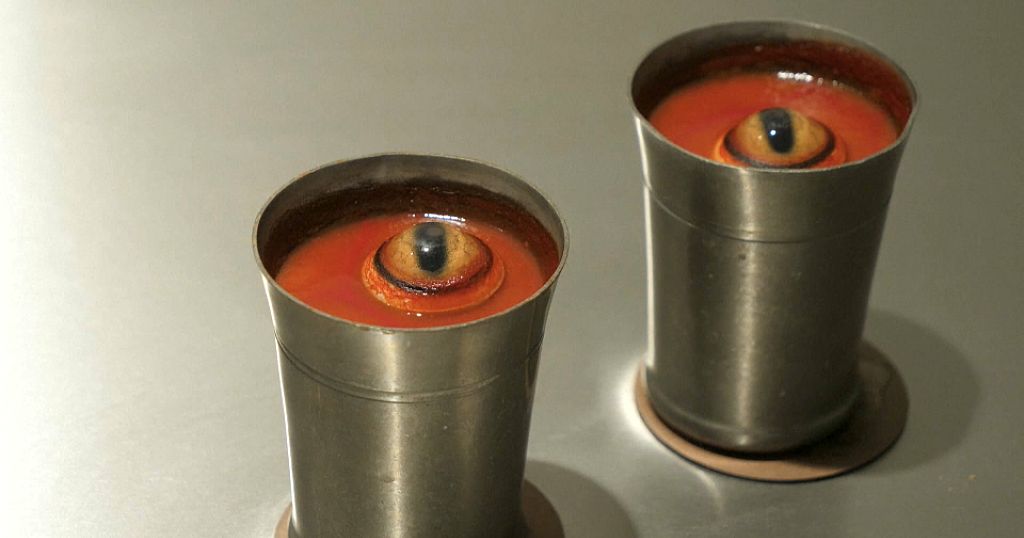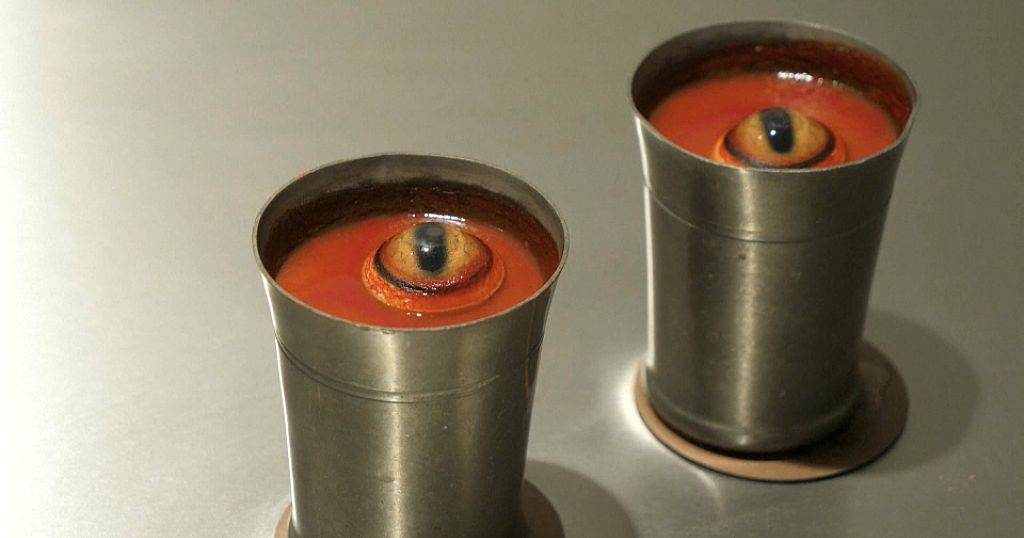
Delicious for some, simply inedible for others.
Would you consider poisonous snakes or a sheep’s eye as an ingredient in a recipe?
Habushu is an alcoholic rice drink from Japan.
The ingredient that sets it apart from other – more mainstream – rice wines is the habu snake, a poisonous viper.
The snake is most often gutted and put on ice before being submerged in the wine.
When it thaws, it wakes up briefly and starts spewing poison in the bottle.
The drink is then stored until the alcohol has neutralized the poison. It’s enjoyed by Habushu aficionados around the world.
One place where it’s probably not drunk often though is in Mongolia, some there are more partial to enjoying a tomato soup with a sheep’s eye floating on top, staring back at you as you put the cup to your lips.
A Berlin Museum is dedicated to showing cultural differences when it comes to cuisine and explores the idea of taste and cultural preferences.
“There are six different basic emotions and disgust is one of them,” Alexandra Bernsteiner, head of Disgusting Food Museum Berlin says.
“It is said that it is the first instance of the immune system, because the brain will let you know when something could contain a disease or when it is something that you shouldn’t think is a food, then you feel disgust. That is for you to avoid compromising your health. So, in that way, disgust is an important feeling.”
“We look at this in a culinary way, to break down prejudice,” says Bernsteiner.
The world’s smelliest Fruit
A food’s smell can also provoke disgust.
European cheese, Sweden’s “Surströmming” [Editor’s Note: fermented fish] or fruits are on display at the museum.
“The Durian fruit is a delicacy from the Asian region. You can both smell it and try it here in the museum. Durian is banned on some airlines because it has such a strong odor that it is not even allowed to be transported,” Bernsteiner says.
“Here, we have coriander. You’re probably wondering why it’s in our exhibition. Because coriander is a completely normal herb, often used in Asian cuisine. The reason why we have it in our exhibition is because we found it interesting that scientific research is being carried out into whether there is a genetic relation to whether coriander is ever perceived as a spice or as an herb. Or whether people think that it has a very strong, salty flavor.”
Each year, around 20,000 people visit the exhibition.
Many are tourists, but there are also school classes and some wanting to know about so-called “future foods” like insects.
The German blood sausage makes an appearance, something that many families in Germany would not find problematic, but someone elsewhere might not like to eat.
Bernsteiner says she has one particular type of food that she finds really disgusting – a jelly pudding, called Götterspeise.
“It is not for me,” she smiles.
At the end of the exhibit is a large bottle of something that most would probably avoid drinking.
Baby mice wine is made by drowning dozens of newborn baby mice in a bottle, then letting it ferment.
It’s sold as a health tonic in China and Korea.
The Disgusting Food Museum in Germany’s capital is open weekly, Fridays to Tuesdays.
Read More: World News | Entertainment News | Celeb News
African News







